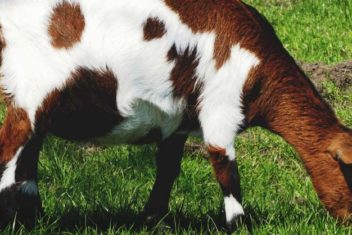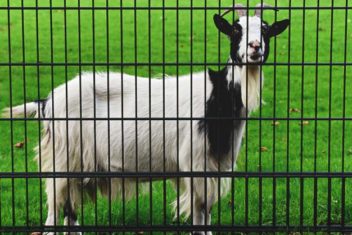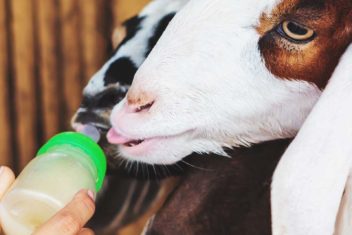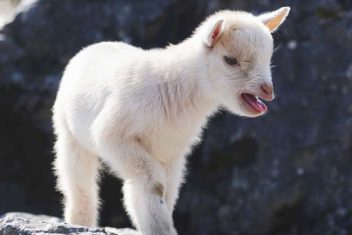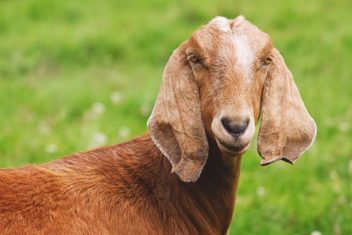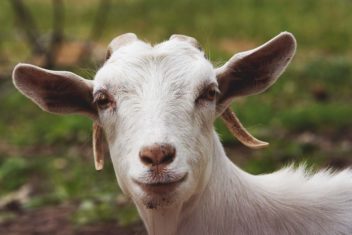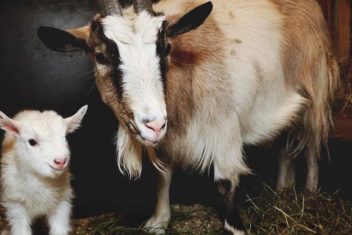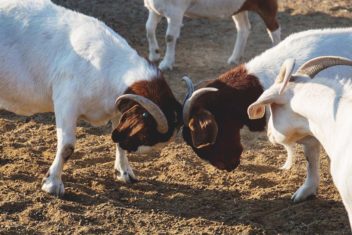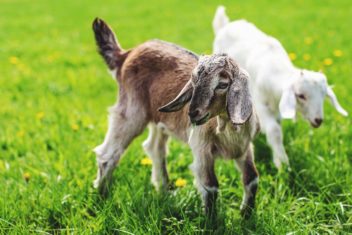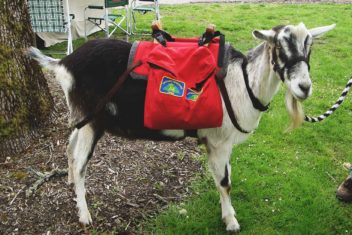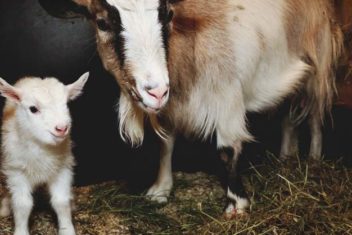When you start a goat herd — whether for milk, meat, fiber, or professional weed control – you’ll be bringing home a lot more than just livestock. You’re bringing home a whole lot of management responsibilities that many new goat keepers don’t even realize exist.
The truth is, daily goat care is a piece of cake. If you set up sound systems, you can whittle your routine down to a minimum amount of work. Personally, I milk eight goats a day, clean shelters for my does and my bucks, make cheese, make compost, and more in less than one hour per day.
Honestly, though, between all the administrative stuff, odds and ends like breeding and kidding, pasture maintenance, etc., I end up spending an average of 1200 hours a year on goats. That’s the equivalent of working 24 hours a week at a part-time job!
The majority of this time isn’t spent in the daily care of your goats. It’s directed at all the administrative and non-routine tasks that make up the brunt of the work I call “Goat Herd Management.”
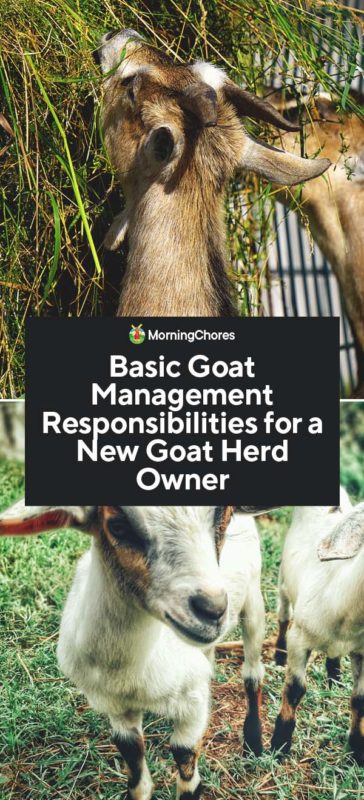
What is Herd Management?
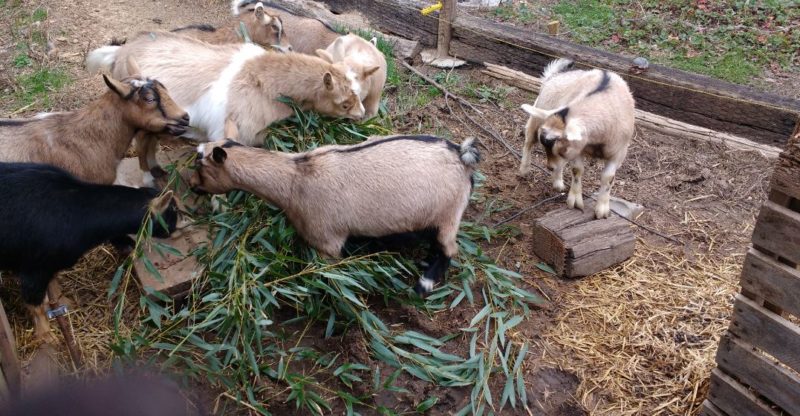
The term “herd management” encompasses all the broad tasks you face as a goat owner that does not relate to daily care.
It includes things like making decisions to ensure the continued health of your herd, breeding-related duties, pasture management, nutrition planning and procuring, seasonal preparations, administrative activities, and satisfying federal and state required legal responsibilities.
The herd management decisions you make will vary based on your purpose for having goats, the breeds you keep, your climate and environmental conditions, and more. There is also a lot of room for opinion and personal expression in goat keeping.
For example, some people want to keep goats as naturally as possible similar to how their wild ancestors might have lived. Others want to create more controlled environments for top production. Ultimately, you’ll need to make your own decisions about what is right for you and your herd.
But for the rest of this post, I want to walk you through some of the common decisions you’ll face as part of goat management.
Parasite Management
Regardless of why you keep goats, parasites are going to be an issue at some point. Goats have them. The key is to make the right decisions about goat care so that parasite loads are managed and goats remain healthy.
Preventative Parasite Care
Some people routinely treat goats for parasites, such as before breeding or a month before kidding. Other goat keepers use herbal remedies like essential oils and herbal supplements as a parasite prevention tool. Some focus on rotational grazing and species intervention, e.g., using chickens or birdsfoot trefoil to reduce parasite larva in the pasture.
As a goat owner, you may treat goats preemptively whenever your herd is under stress. You might get a microscope and check fecal samples as needed. You may work with a large animal veterinarian to do testing as needed to track parasite loads.
There are lots of ways to approach parasite management. Your job as a good goat keeper is to understand the risks. Then, make the decisions that work best for you and your herd in your particular environment.
Parasite Awareness
Even if you don’t have to deal with parasite infestations daily, as a goat manager, you’ll spend a lot of mental energy being tuned in to your herd health and watching for signs that parasite intervention is needed. You’ll also spend time planning for prevention, determining appropriate treatment, and bolstering the health of goats at risk for infestation.
Breeding Management
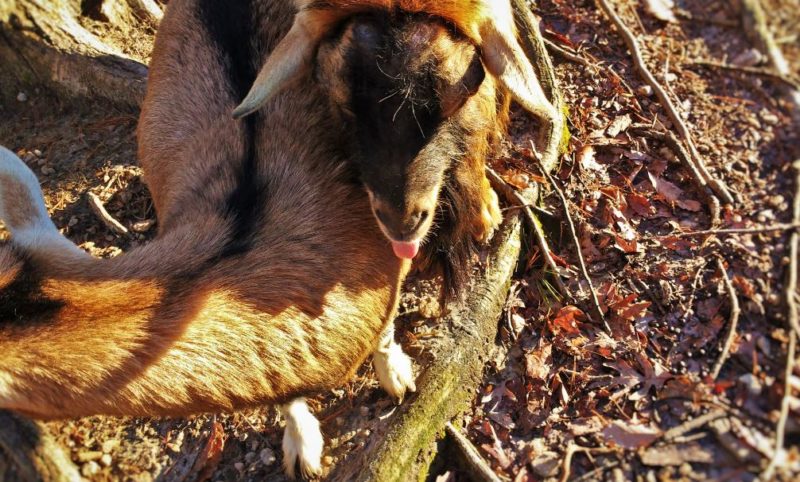
If you have a dairy herd, you’ll need to breed your goats routinely to keep them in milk production. For meat, you’ll need to breed to have a constant supply of new goats to raise for processing. Fiber goats may not need to be bred as often, but you’ll eventually need to replace any stock that is timing out or to increase your herd to meet demands.
Doing the Deed
In other words, breeding is something that most herd keepers have to think about at some point. You need to make decisions about whether to keep a buck for this, use a sire, or consider artificial insemination (AI).
You’ll need to identify the traits you want to accentuate and make a strategic plan for finding the right breeding stock for your goals. You’ll also need to time breeding based on estrus and estrous cycles, manage goat health during pregnancies, and make care decisions about kidding.
Time for Kids
The most time-consuming part about breeding though isn’t getting the deed done; it’s managing kid care after birth. Plus, you’ll need to either integrate the keepers or re-home kids you don’t need after weaning.
Selling livestock, even as pets, is federally and state regulated. You’ll need to do research to identify applicable laws and implement systems to comply with those requirements.
Pasture Management
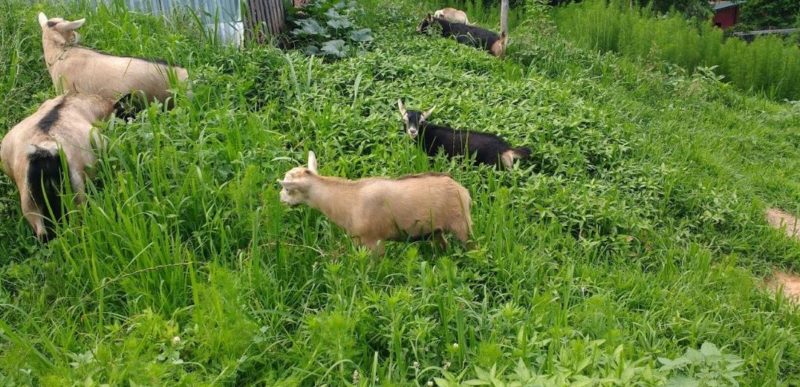
Goats are diverse “browsers” by nature, not grass eaters. Their digestive health is dependent on having access to a wide variety of forage types from weeds to trees, shrubs, and tall grasses.
Create Enclosures
This means they will definitely eat your fruit trees and landscape plants if allowed access to them. So, generally, most people provide enclosed pastures to confine goats to appropriate areas for browsing. Creating and maintaining those enclosures is a big part of the work involved in herd management.
Fences – permanent or temporary – must be installed and maintained. Electric fences are easy to set up but more work to maintain. Permanent fences are lower in maintenance but more expensive and more work at the outset.
Pasture Maintenance
Grazing needs to be managed, so the pasture regenerates and continues to provide goats access to diverse food long-term. The soil in pasture areas must also be cared for to prevent erosion and maintain plant health.
Pastures also need rest to control parasite infestations. Things like rotational grazing or alternate species grazing are often used to maintain pasture quality.
Nutrition Management
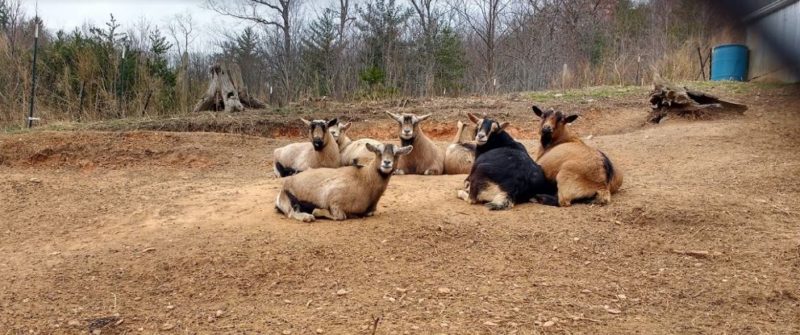
If your pasture areas do not provide sufficient nutrition for goat health, then you also need to use other methods for ensuring your goats get the quality of feed they need. You’ll have to make decisions about how and when to supplement pasture with different kinds of feed.
Supplemental Feed
You may make your own feed mixes or buy formulated feed. You’ll have to source ingredients, pick up supplies, and plan places to store them. You’ll have to keep track of your inventories, so you don’t run out and allocate time to restock supplies. Hauling hay and feed is heavy-duty, labor-intensive work.
Monitor Nutritional Health
You’ll also need to monitor the health of your goats in response to your feed programs. This may include making seasonal adjustments based on the conditions of the pasture or the status of the goats.
Pregnant and nursing does need more nutrition than whethers or unused bucks. So, you may also need to plan for and provide different kinds of nutrition to various groups within your herd.
Closed or Open Herd
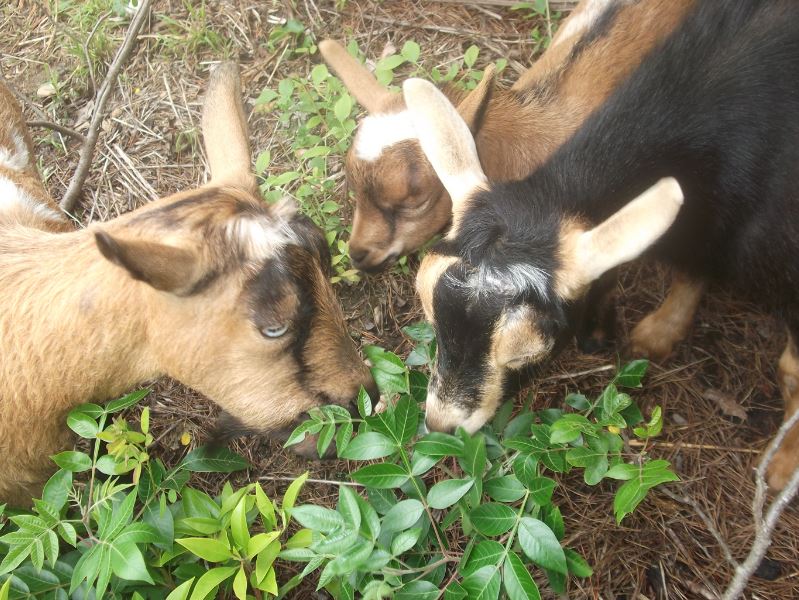
You will also want to make decisions early on about whether to keep a closed or open herd.
Closed Herd
In a closed herd, your goats seldom come into contact with goats from other herds. So, there is minimal risk of disease transmission to or from your herd.
You generally bring in your breeding stock at the outset. Then once you are certain you have no health problems in your breeding stock, you’ll breed new stock from your existing does and bucks. If you do bring in a new goat periodically, you likely buy from other closed herds that perform routine health tests on their goats.
This is generally considered the easiest way to manage the health of your herd. However, this means you’ll have to maintain your own buck population for genetic diversity.
Open Herd
If you maintain an open herd, you can bring in new stock to your herd from other breeders as needed. You may get stock from more risky sources like auctions. You can also use sire bucks from other farms to increase genetic diversity in your herd. You may show your herd members in competition or use your bucks as sires for does in other herds.
These kinds of activities increase your risk of bringing health complications back to your herd. Generally, though, even in an open herd, goats are quarantined after exposure to outside animals for herd safety.
That means you’ll need a separate shelter for quarantine. Some open herds also use blood tests to check for viruses like Caprine Arthritis Encephalitis (CAE) since goats may not show symptoms of the disease after infection.
Seasonal Management
Depending on your climate, you may also need to alter your management practices based on the seasons. For most goats, fall is when they need extra care to get them ready for breeding. Winter preparation includes changing your barn for cold weather comfort.
Spring is when kidding occurs, so you may need to isolate bucks after kids are born. If you plan to confine pregnant does, you’ll need to feed and water them separately, which adds time onto your regular routine. If you bottle raise kids, then add four visits per day (minimum) to your to-do list.
Late spring and summer usually mean extra care to keep goats cool and hydrated. You may also spend a lot of time advertising and selling extra kids or moving them to their weaning pens and dealing with disgruntled does. Parasite pressure may also increase, so you’ll need to be more diligent in your health checks.
Record-Keeping
Now if you never sell a goat, then the level of record keeping you do can be minimal. You may want to keep a journal of breeding-related dates and health histories for your own reference. However, if you get into the business of selling goats, then you have a lot more work to do.
Goat Business
If you sell goats, you are generally required to keep detailed records on the lineage and health histories of your goats. You also have to identify your goats using a legal numbering system and tattooing their identification code on their ears or tails. You also have to give customers receipts and keep your financial records related to your sales.
Breed Registrations
Additionally, if you plan to register your goats, you’ll need to maintain registrations and pay renewal fees annually for your breeding stock. You’ll need to register kid goats before or at the time of sale.
Competitions
If you are showing goats, then you must also maintain health certificates, obtain travel permits, keep quarantine records, and more. For dairy goats, you may need to weigh and track milk production.
Veterinarian Care
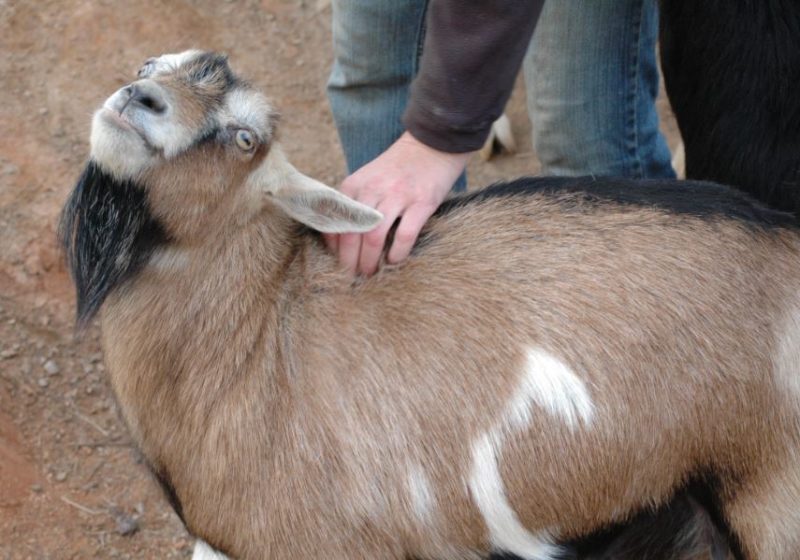
It’s also a good idea to develop your goat management strategies relative to when you will, and won’t, use veterinarian services. Sometimes new goat owners will start by working closely with a veterinarian for all of their routine and non-routine health care. With experience though, most goat herd managers end up becoming quite self-sufficient at handling their goat medical care.
Home Care
Castrating male goats that won’t be used as bucks and dis-budding horned goats are two examples of medical procedures goat owners often handle to keep veterinarian costs low. Doing blood tests and administering de-wormers and vitamin injections are things most goat owner’s do themselves.
Also, most herd managers assist with birth complications, such as turning a mal-positioned kid. They also handle things like correcting anal and vaginal prolapses and routine injury care.
Outsourced By Some
Some goat owners will draw the line at things like kid dissection (if necessary to save a doe’s life). Things like autopsies to determine the cause of death and fecal exams are also things some owners do, and others don’t.
Plan Time
Most goat herd managers simply can’t afford the high costs of vet care for an entire herd of goats. As such, reading goat-related health care books and being ready for routine and emergency medical care is often a goat management responsibility that goat keepers spend a lot of time learning and doing.
Attrition
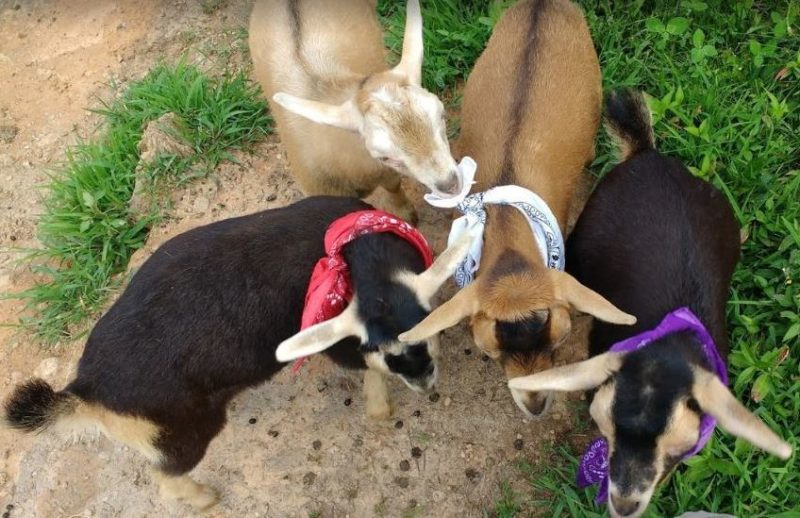
Another area of goat keeping that can take considerable time is attrition. This is a term I started using as a manager at a law firm. But it applies equally well to goat management. It covers things like hiring, firing, right-staffing, etc. Believe it or not, but you will also have to deal with these issues in the goat world too.
Adding to the Herd
The fun part of attrition is when you get to buy new breeding stock or keep your kids to become part of your herd. Our herds can only be as big as our land or budgets will support. So, more often than not, attrition means letting go.
Letting Go
Not all goats are right for a herd. So sometimes you have to ‘fire’ members of your herd by selling or culling them.
Unfortunately, injured goats or sick goats often can’t be sold. So, you have to make decisions about whether to treat them or process them. Kids may also be born with deformities that make them unsaleable. Older goats may decline in health and require euthanasia.
Home processing can take time and a mental and emotional toll. Good herd managers will grapple with these hard decisions. They will also spend time to become educated so they can cull responsibly and with dignity for the animal.
Conclusion
As I said at the outset, daily goat care is easy. But, it takes a true herd manager to maintain the long-term health and well-being of a herd. I truly believe a person’s level of commitment to developing good goat management skills is what decides their success as a goat keeper.
If this post didn’t scare you off (or if you spent most of your reading time nodding your head in agreement), then I suspect you have the makings of a true goat herd manager. Your herd is (or will be) lucky to have you!


